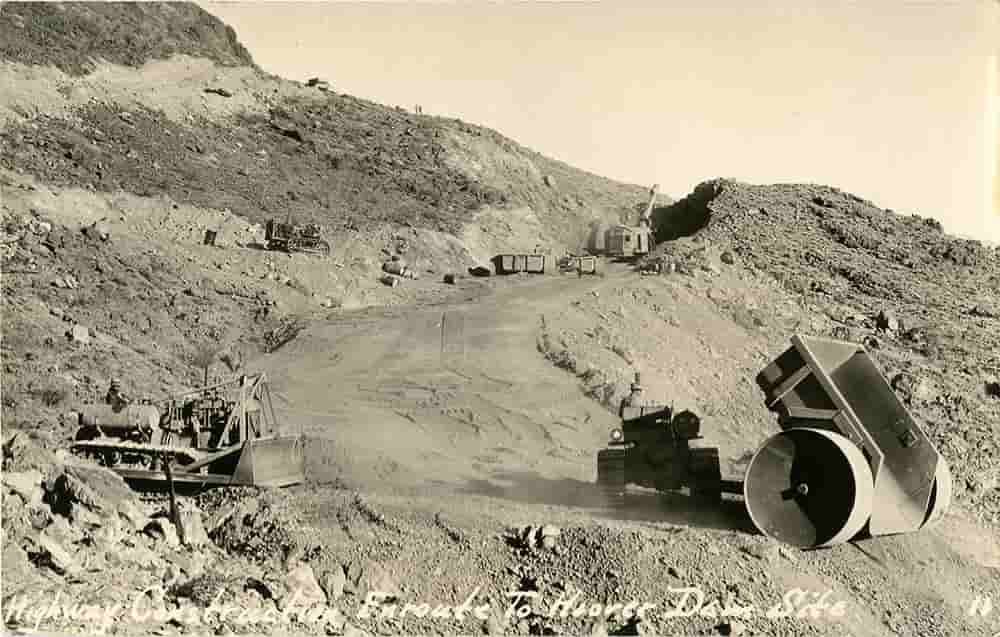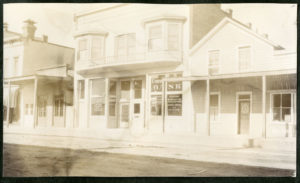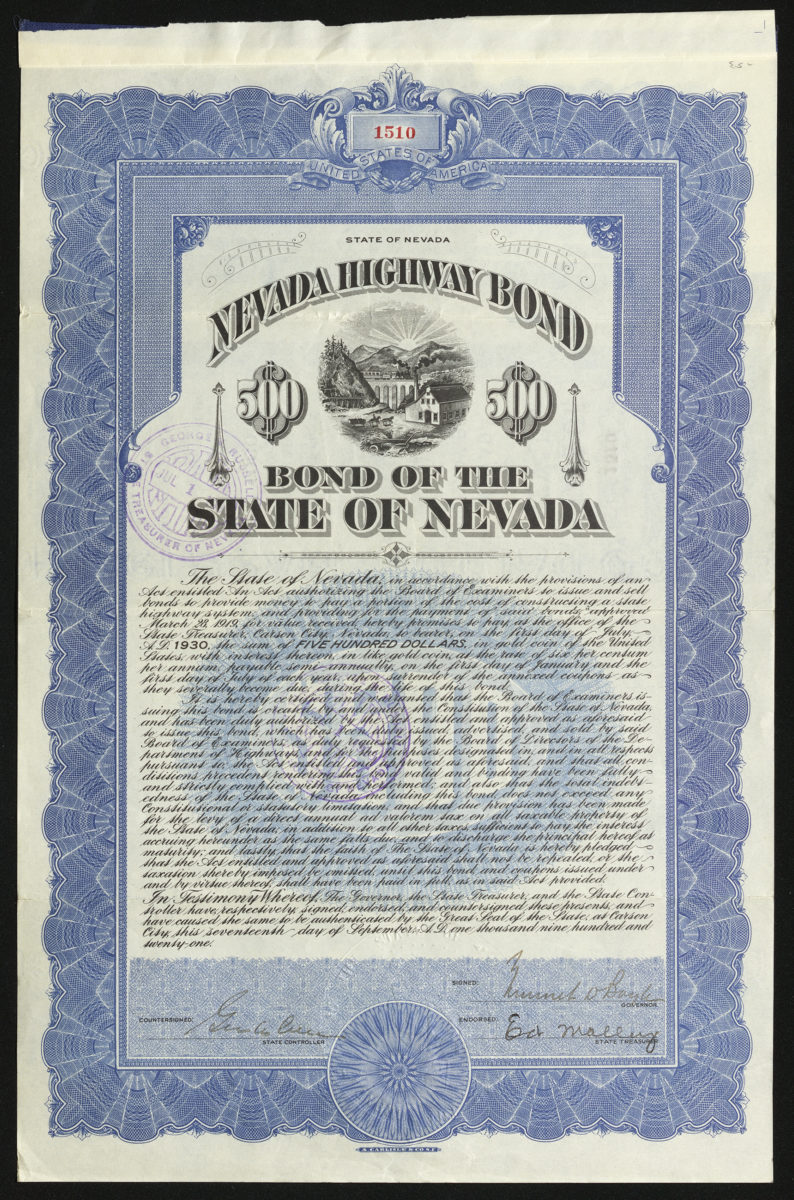
Embezzlement and the Nevada Highway
State Treasurer Ed Malley and his accomplices embezzled over half a million dollars from the Nevada State Treasury, costing Nevada dearly on the eve of the Great Depression. To regain losses, Nevada Governor Fred B. Balzar legalized gambling and shortened divorce residency to only six weeks in 1931.
Header Image: Highway construction enroute to the Hoover Dam, Nevada ca. 1920; courtesy Special Collections Department, University of Nevada, Reno Libraries [1].
“This is a H— of a mess, and I think in the wind you will find a good many people in jail.”

George Wingfield’s Carson Valley Bank, which was wrapped up in the scandal; courtesy Special Collections Department, University of Nevada, Reno Libraries
This is a good example of a standard State of Nevada bearer bond. It was signed by the Nevada Governor of the time Emmet D. Boyle, who served from 1915 to 1923 after defeating Tasker Oddie’s bid for reelection. Boyle, born in Gold Hill in 1879, was Nevada’s first native-born governor. He was also Nevada’s first Catholic governor.
During his time as state governor, the State Highway Department was established, and in 1921, Nevada Highway bonds like this were issued to provide funds to cover part of the costs of constructing two new portions of the Nevada State Highway System, Routes 5 and 6. This bond came with a series of interest warrants that could be redeemed semiannually; the last two of twenty remain attached to this certificate.
It is interesting to note that one of the other signers of this document was state treasurer Ed Malley, infamous conspirator in the Cole-Malley Embezzlement scandal of the 1920s. Malley, along with state controller George Cole, embezzled $516,322.16 from the Nevada State Treasury with the help of Carson Valley Bank cashier Harold C. Clapp, who covered the transactions. Seduced by the fortunes to be made in mining stocks, Cole and Malley stole the money to make investments. Unfortunately the pair made poor choices, including a $180,000 loan to the Signal Hill Oil Company in a last-ditch effort to regain their losses. The money was lost when the oil wells came up dry, putting the men further in the hole. Co-conspirator Clapp was then fired from his job because of his drinking problem, endangering the entire scheme.
George Wingfield was embroiled in the scandal both as the owner of the Carson Valley Bank and as the owner of the Nevada Surety and Bonding Company that had insured Malley and Cole for $100,000 each. When the two men confessed to Wingfield in 1927 in hopes that he might help cover their losses to avoid a public scandal, Wingfield quickly moved to remedy the situation before it became public and panic could set in. He worked with friends in the state government to correct the situation and mitigate the public fallout with a joint announcement in newspapers of the fraud and actions being taken. (Scroll down to continue reading about the Nevada Highway Bond below)
Cole and Malley were arrested and charged with misappropriation of state funds. They hired Wingfield adversary Pat McCarran as their attorney—at the time, there was bad blood between the two resulting from a divorce lawsuit in 1906—but McCarran’s attempts to implicate Wingfield in the scheme failed and the two men were imprisoned. Meanwhile, Wingfield was able to settle his obligations with a payment of $154,896.65 to the State of Nevada, a mere fraction of the funds lost. The embezzlement scandal and perceived governmental preferential treatment of Wingfield ultimately proved to be the beginning of the end for Wingfield. His banking empire collapsed in the 1930s, and he declared bankruptcy in 1935, never fully recovering his wealth or status.
This scandal occurred on the eve of the Great Depression and during Fred B. Balzar’s time as Nevada Governor. The loss of funds from the state treasury contributed to Balzar’s 1931 decision to legalize gambling and shorten the residency period for divorce to six weeks in an effort to boost the Nevada economy.
This certificate was produced by A. Carlisle & Co., a prominent printing and lithography company based out of San Francisco, which had originally been founded on the boom of the California Gold Rush. It has beautifully intricate designs around the borders and behind the text; note the design behind the signatures which reads “United States of America.” The vignette at the top shows a detailed rendering of the image from the Great Seal of the State of Nevada; the seal is also embossed on the lower portion of this certificate. The two stamps in purple ink from 1930 are from state treasurer George B. Russell who succeeded the disgraced Ed Malley in 1927.
 University of Nevada, Reno
University of Nevada, Reno
